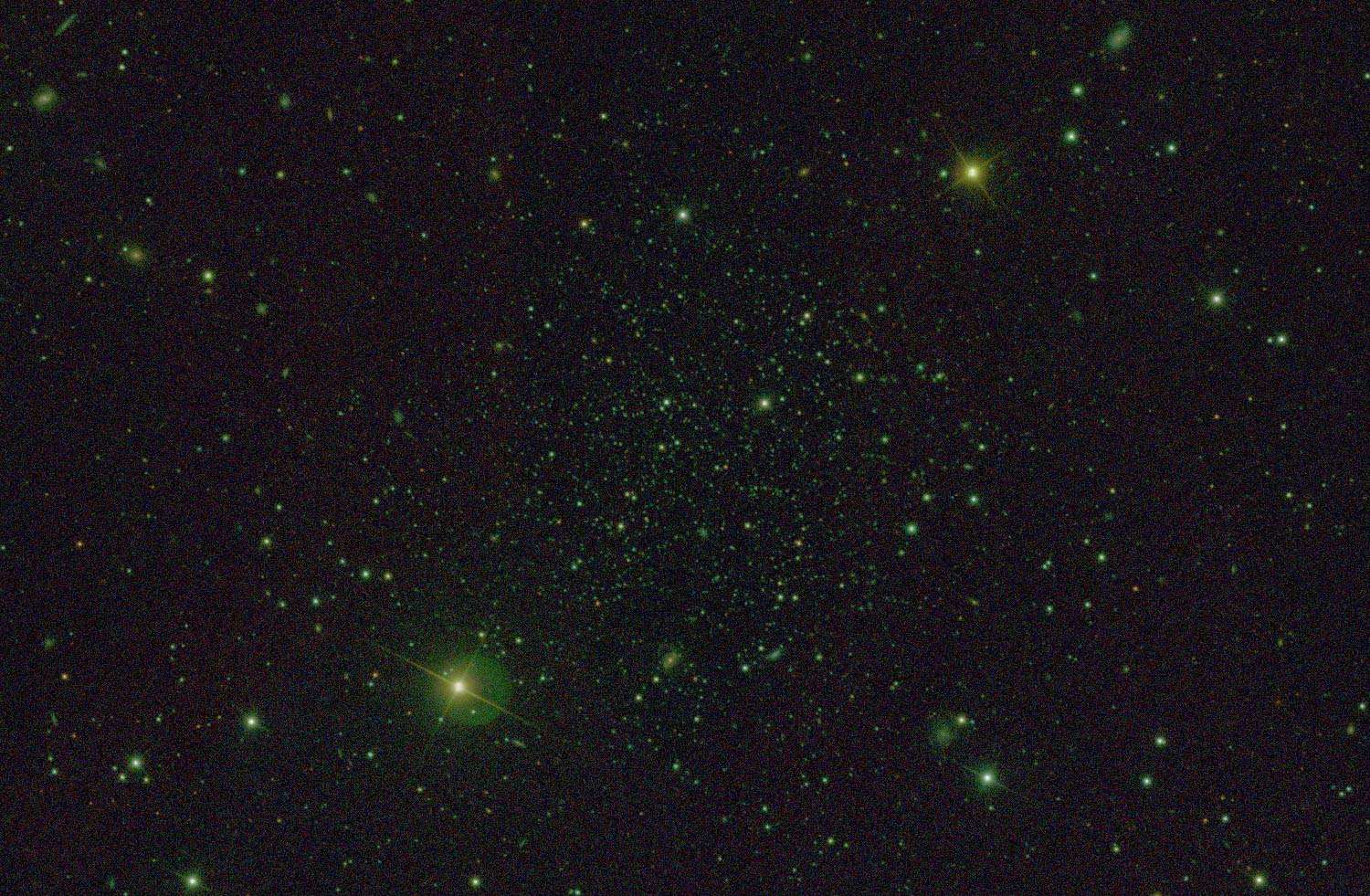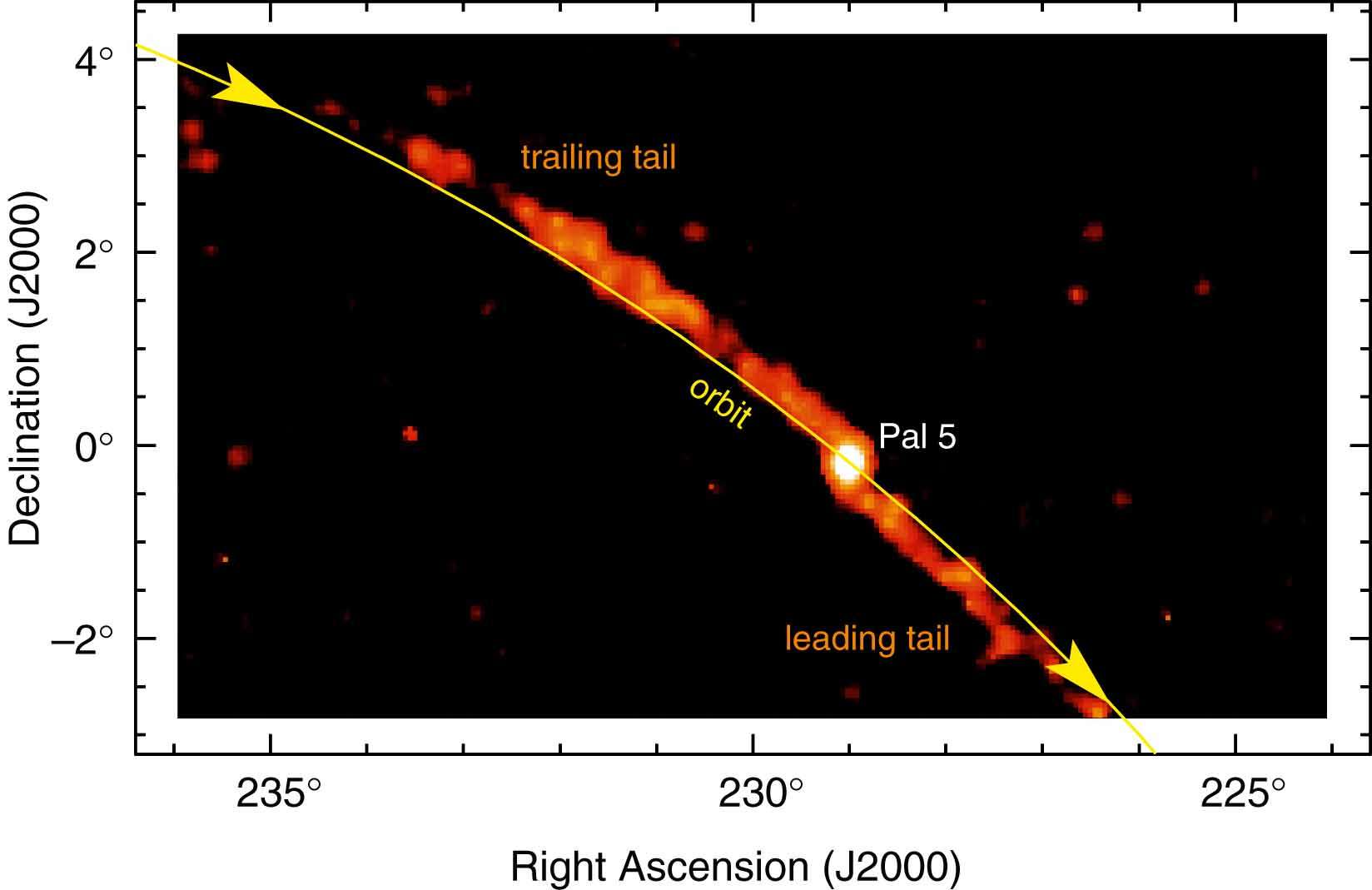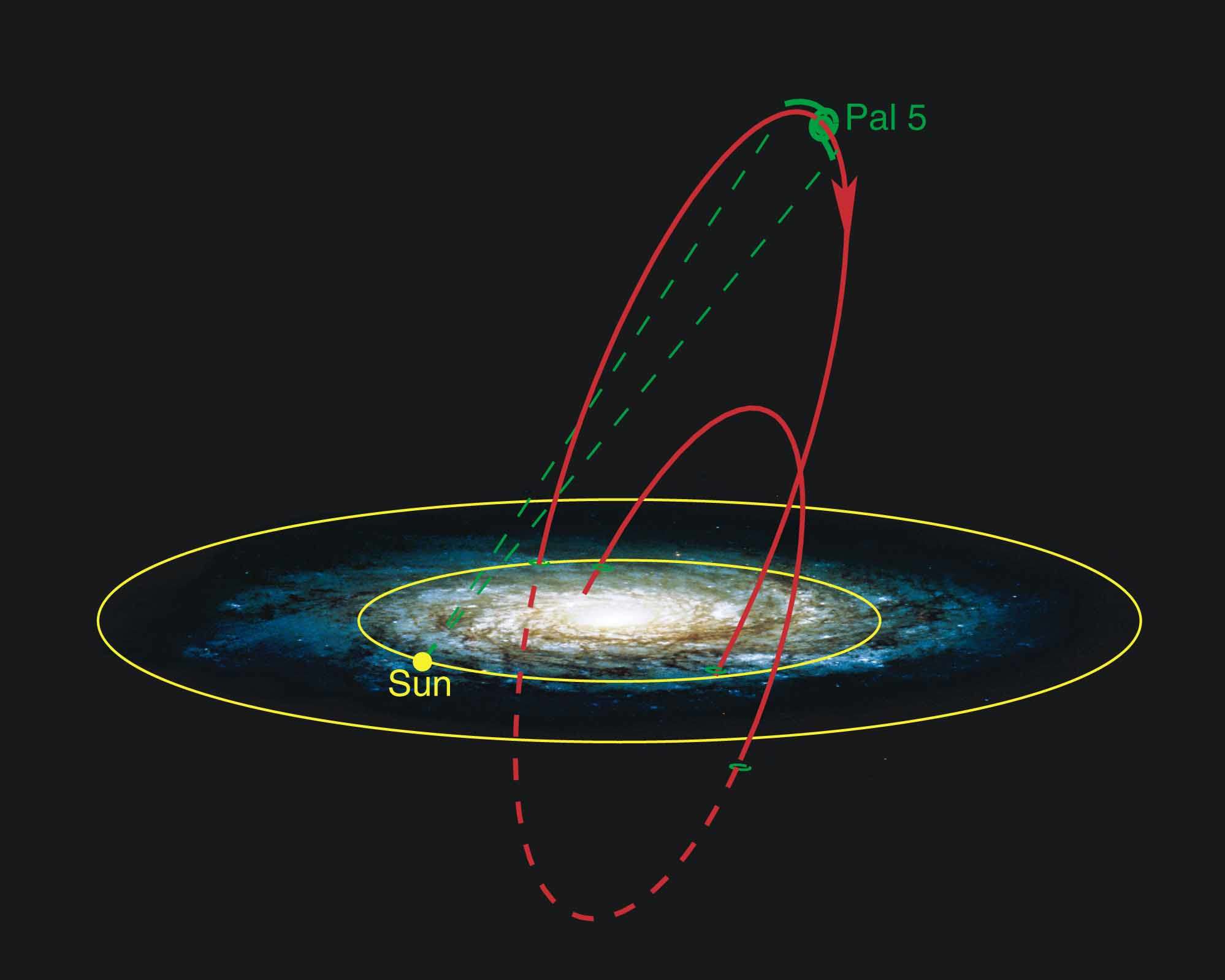Create a free profile to get unlimited access to exclusive videos, sweepstakes, and more!
This star cluster is slowly being taken over by black holes. In a billion years they’ll kill it.

A distant cluster of stars orbiting our galaxy has a dark fate awaiting it: It’s slowly being taken over by black holes, and in a billion years, just as it finally dissolves into space, it will be entirely made up of black holes.
This may sound weird, but in fact may happen fairly often to such clusters.
The object in question is called Palomar 5. It’s a globular cluster, which are usually tightly packed collections of hundreds of thousands if not millions of stars in a roughly ball-shaped collection a couple dozen light years across.
But Palomar 5 is weird. For one thing, it’s very sparse, with only about 1,500 stars in it. For another it’s unusually big, well over a hundred light years in size. That means it’s very low density, with stars a few light years apart on average. That’s similar to distances between stars out here in the galactic suburbs where the Sun is — but in a typical globular cluster there are thousands of stars in that same space.
Palomar 5 is out in the galactic halo, 80,000 light years from us, well outside the main body of the galaxy. Many globulars orbit that far out, but they’re not alone. In recent years, astronomers have found stellar streams out there: long, thin streamers of stars all moving around the galaxy along the same orbit. It’s thought that these are formed as stars are stripped out of globular clusters (or small dwarf galaxies) by the Milky Way’s gravity. But no cluster has ever been seen embedded in these more distant streams.
Except for Palomar 5*. It has enormous trails of stars leading and trailing behind it, stretching over 20° in the sky (the apparent size both your fists together at arms’ length). This makes it something of a key to understanding what’s happening out there.
To try to understand why Palomar 5 is so odd, a team of astronomers attacked it with physics. They used a computer model that allows them to simulate what would happen to a cluster over great lengths of time (from its formation 11-12 billion years ago through today and into the future) as the stars inside it interact gravitationally, as well as how the stars change over that time (what’s called stellar evolution; stars aging and turning into red giants or exploding as supernovae).
Using various models and assumptions (like the number of stars the cluster starts out with) they were able to get a couple that fit with the cluster’s current appearance fairly well, including the existence of the streams. Even if the cluster starts out with hundreds of thousands of stars, it loses them over time to different effects. For example, massive stars explode and form neutron stars or black holes. Sometimes this gives the remaining object a huge kick that can eject it from the cluster entirely. Also, stars can leave the cluster if they gravitationally interact with other stars and/or black holes.
At first, after the cluster forms, the number of black holes increases as massive stars explode to form them. Then, over the next hundred million years or so the number of black holes decreases as many get ejected from the core from gravitational interactions (how big an effect this is depends mostly on how densely packed the cluster is; the denser it is the more interactions there are).
What they found, though, is that over long periods of time the black holes in the core tend to help eject the stars in the cluster pretty efficiently. That means the fraction of black holes in the cluster compared to the number of stars in total increases over time. To get the cluster to look as it does now they find that there must be more than 120 black holes in the cluster with an average of ~17 times the Sun’s mass each. That represents over 20% of the entire cluster mass, well over twice as much as expected for a normal cluster.
That’s why the cluster is puffy; the stars in it are gaining orbital energy as they interact with the black holes; every time they swing near the cluster core (though not near enough to the black holes themselves to be torn apart) they get a kick that makes their orbits bigger. Over time the cluster puffs up and gets less dense. That also makes it easier for the Milky Way’s gravity to strip them away, forming the stellar streams.
They find that many of the streams seen in the galactic halo are clusters in the final stages of their lives; dissolved to death by black holes. For Palomar 5 specifically they find that the black hole fraction will grow until, about a billion years from now, all the “normal” stars are gone and only black holes remain, but by then the cluster will also be in the last stages of total dissolution.
The problem here is observationally confirming or refuting this idea. The cluster is a long way off, and seeing the black holes themselves difficult. They predict that stars in the cluster will have a 50% bigger spread in orbital velocities than expected, which could be measured. They also don’t expect to find any binary stars (two stars orbiting each other) with a period bigger then about six months. Any binary with stars farther apart than that will get pulled apart by the black holes, the stars sent flying off. That’s potentially observable, too.
Also, the density of stars in the cluster and the presence or lack of stellar streams are observable as well, making it possible to find more clusters like Palomar 5.
There was a paper recently predicting a lot of black holes in the globular cluster NGC 6397, but it was more recently (and soundly) refuted by globular experts saying the cluster isn’t puffy, and is unlikely to have any black holes in it at all. Palomar 5 is different, since it is puffy. There may be more like it out there in the halo as well.
A few decades ago globular clusters were thought to be all pretty much the same: The same age, same kind of stars, same kinds of orbits, and so on. We know better now. They are varied and diverse, and each has a story to tell. Palomar 5, weird as it is, may have a bigger and more iconic story than most.
*Some streams are seen with clusters in them, but they are inside the main galaxy or close to it; in this case we’re talking about ones tens of thousands of light years outside it.




























